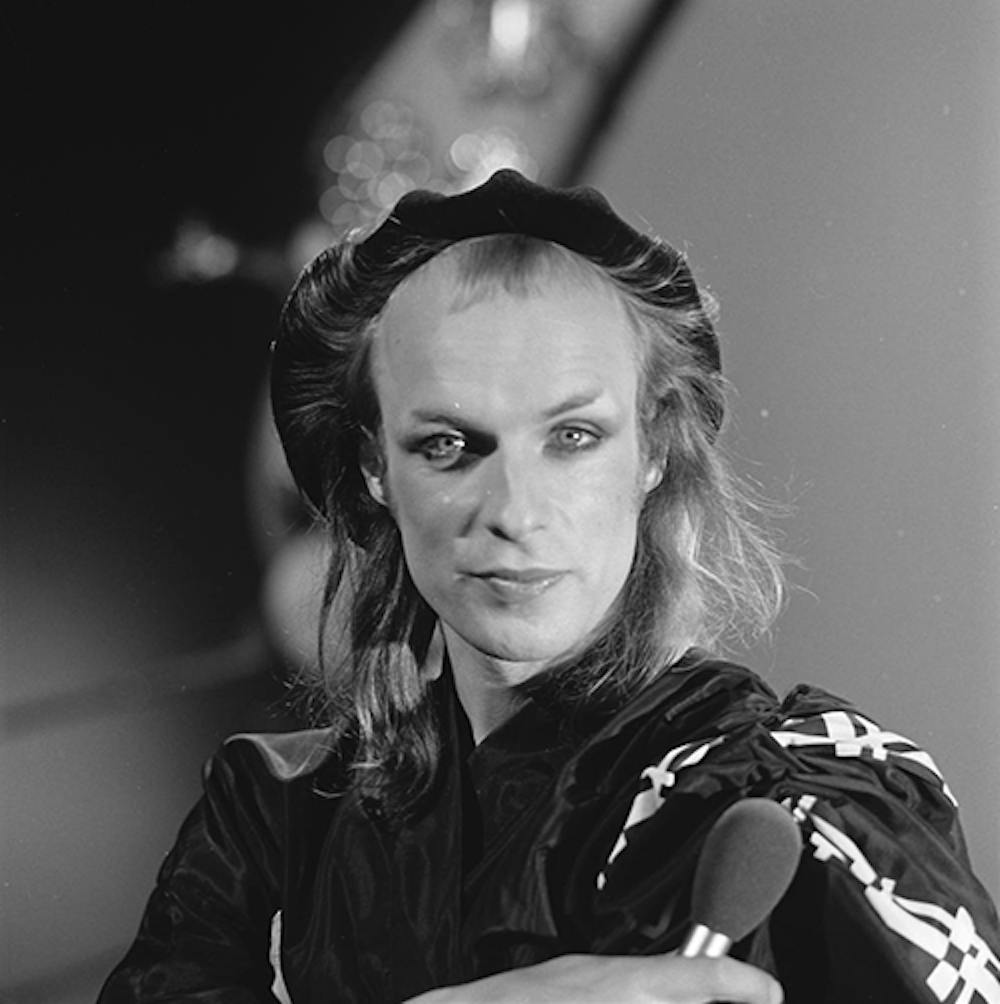Last Friday, Brian Eno released Film Music 1976 – 2020, his first-ever compilation of music for film and television. This album spans five decades of his work in cinema, all the way from music he wrote for the 1976 movie Sebastiane, to his score for We Are as Gods, a documentary released earlier this year.
Eno, who has had an influential career dabbling in genres such as glam rock and pop, is perhaps best known for his contributions to the genre known as “ambient music.” His 1978 release of Ambient 1: Music for Airports is one of the major early releases in the genre and clearly defined ambient music’s unique characteristics.
“An ambience is defined as an atmosphere, or a surrounding influence: a tint,” Eno wrote in the record’s liner notes. “My intention is to produce original pieces ostensibly (but not exclusively) for particular times and situations with a view to building up a small but versatile catalogue of environmental music suited to a wide variety of moods and atmospheres.”
Ambient music has the function of enhancing a listener’s experience of a physical space; it is something that’s as much a part of space as a piece of furniture. Eno’s compilation of music for films and television is no exception to this designation. After all, much of this music was produced in Eno’s early days of pioneering ambient music.
What’s interesting about Eno’s film music is that it is not meant to create an atmosphere enclosing its listener, but rather, an atmosphere that exists for scenes in movies — a parallel reality removed from the listener.
The qualities of the songs in Film Music 1976 – 2020 reflect this to a certain extent. All the songs are quite short, at least compared to the length of some of Eno’s songs on his ambient albums, which could last anywhere from 10 to 20 minutes. You really get the sense that a lot of Eno’s film and television music was meant to accompany short, pivotal moments on screen and in situations far removed from our everyday lives.
The instrumentation on these songs is also much more varied than that on Ambient 1: Music for Airports or Eno’s subsequent ambient release, Ambient 2: The Plateaux of Mirror, reflecting the diversity of instruments and sounds Eno has used to accommodate a variety of scenes. Besides a plethora of synthesizer sounds, his songs also feature drums, guitars and pianos. Samples from nature and resonant instruments like chimes and bells are also heavily featured. As a result, the music on this record feels very attuned to certain moods and circumstances associated with moments seen in film.
“Deep Blue Day,” one of the selections on this album that was used in the excellent 1996 dark comedy/drama Trainspotting, perfectly fits a surreal scene where a character goes looking for something in a toilet bowl, only to end up on the other side, swimming in the ocean. I can’t listen to this song without associating it with Trainspotting.
However, I feel like this sense of specificity actually stops at the level of the title and its association with a certain film. This album is full of music that is hard to put your finger on — it rarely designates a clear mood or atmosphere. Although I associate “Deep Blue Day” with Trainspotting, I’m not sure how it’s supposed to function in the toilet scene. Are the bright, smooth synth pads supposed to create a state of blissful excitement? Is the muffled, lullaby-like guitar strumming supposed to establish a carefree, relaxed environment? Or does the sharpness of the steel guitar riffs and the jumpy bassline complement the comic absurdity of the situation? In a way, this ambiguity can add a lot to the film in which it is operating because it creates fertile ground for interpretation.
All the music on this record is quiet and reserved. It doesn’t announce itself or convey a clear mood in the way that the The Avengers song or the theme from Schindler’s List do. There’s little that feels “cinematic” about the music on this record, and in a way, it seems as if the music wants to stay on the sidelines and let the situation on screen command greater attention.
There are also rarely any clear, catchy melodies, perhaps as a way of keeping the music from being too recognizable or tied to a specific scene or even mood. For example, the artificial, seemingly keyless flute melody in “Blood Red,” originally recorded for BBC Arena — Francis Bacon, fades in and out as sounds of birds and fugitive keyboard passages meander in the background. The tempo is also very slow and the rhythm nearly inscrutable.
As a result, many of the songs on Film Music 1976 – 2020 seem to transcend associations to film. At the very least, many of these songs don’t purely reproduce or explicate scenes, but rather complement them by extending their own possible meanings. The music often sounds as if it’s either unsure of or searching for its own mood or genre, and I would add that it invites the listener to take part in that searching as well.
I thoroughly enjoyed each selection on Film Music 1976 – 2020. I wouldn’t say this music is for everyone, as it doesn’t have the kinds of catchy rhythms and clear melodies that figure into most modern music, but it has its merits as a kind of music that invites contemplation and reflection. It could certainly be of use for those looking to enhance the quarantine spaces around them.





